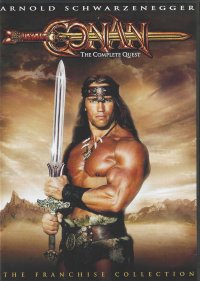
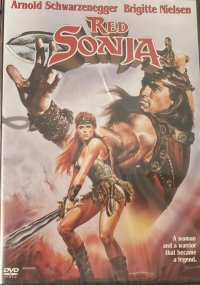
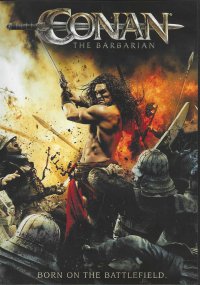
So over the week that my boys were at camp and at the National Youth Gathering for non-perch-handling Lutherans, I took a moment to review the major Conan movies, including:
- Conan the Barbarian (1982)
- Conan the Destroyer (1984)
- Red Sonja (1985)
- Conan the Barbarian (2011)
All right, Red Sonja is not a Conan movie, but it could have been. It is a De Laurentis sword and sorcery flick with Arnold Schwarzeneggar’s name above the titles and above Brigitte Nielsen’s name.
To be honest, I have seen Red Sonja most of the films, as it was on Showtime in that era where I was young, bored, and not supposed to leave the trailer during the day when my mother was at work. So if it was on Showtime in those mid-1980s summers, I saw it a bunch, and Red Sonja qualifies. Secondarily, I have seen the first Conan the Barbarian several times, and Conan the Destroyer. It was the first time I’d seen the Jason Mimosa Conan the Barbarian–I remember when it came out that it was presented as being pretty brutal and not being too interested in seeing it.
So:
In Conan the Barbarian, young Conan sees his father and mother killed before him when a raiding party strikes their undefended village, and he is taken as a slave. He grows up, becomes strong from his labor, and then ends up as a gladiator traveling with Mongol-types, still a slave, until he is released. He flees to a dead area where he finds Mako playing a sorcerer of questionable ability and seeks his revenge on the leader of the band who killed his family and razed his village, Thulsa Doom played by James Earl Jones. Of course, the man is now the leader of a spreading cult of snake-handlers. Oh, and Sandahl Bergman plays Valeria, a fighter-thief that Conan loves.
So it’s a pretty good bit of sword-and-sorcery low fantasy, with magic and whatnot, and it’s the most memorable of the films because, c’mon, man, James Earl Jones turns into a giant snake, and the film has the “What is best in life?” line. It opens and closes with Mako saying it’s but one of Conan’s many adventures.
In Conan the Destroyer, Conan is given a quest to escort the virgin niece, played by Olivia d’Abo, of a queen who is destined to restore the horn of a sleeping god. So Conan and a thief start off with the girl and her bodyguard, played by Wilt Chamberlain. They rescue Mako and a female warrior, played by Grace Jones, from a hostile tribe and they go do some sidequests and then the main quest and discover they’ve been played, and the queen is going to sacrifice the virgin to resurrect the god. So Conan has to slay the tall bodyguard and then the resurrected god.
You know, I might have only seen this twice: Once when I recorded the films onto a DVR and this time. It certainly did not stick with me.
In Red Sonja, a young woman watches her family killed before her for rejecting an evil queen (played by Sandahl Bergman). Left for dead, she prays for vengeance and a magickal figure offers her assistance. And Sonja goes to a monastery to learn to fight with sorta-Buddhists. The same evil queen and her henchmen attack another cult who are about to destroy a talisman called the Talisman that is too powerful for humans. They succeed, leaving only Sonja’s sister to escape and tell Sonja she must plunge it into darkness. So Sonja does some sidequests, dodges and declines Arnold Schwarzeneggar’s offers of help (but he shows up time and again to save the day). Then they storm the castle and save the day.
You know, for having watched the film over and over again thirty-five years ago, I remembered very little about the plot and the action in it. Maybe it will stay with me, but maybe not. Although I own the DVD now and can watch it again before three decades pass.
In Conan the Barbarian, the leader of a raiding band is looking for the parts of a magic mask that grant the wearer great powers. The Cimmerian tribes broke the mask when resisting the last guy to wear it, and they’ve hidden the pieces across Hyboria. Conan’s father is a blacksmith and war leader for their tribe, and this particular film develops the relationship between the father (played by Ron Perlman) and the young Conan. So he lives longer than a parent in the other films or your typical Disney film. But when the bad guy comes to town with his creepy (probably supposed to be Goth hot) daughter, they slaughter his family and take the last piece. But they need a woman of pure blood to sacrifice, which leads them to a monastery. The pureblood woman, played by Rachel Nichols escapes, and Conan captures her/defends her from an ambush and uses her as bait to draw the warlord to him for revenge.
You know, the other three movies are brightly colored and maybe just a touch orange in hue, but the latter film is very darkly colored, with the modern deep blue palette and with a lot of scenes taking place in the darkness or dimly lit areas. It was a little less pleasant to look at.
And as far as the brutishness goes, I guess the Jason Mimosa was supposed to play the character a little more coldly than the Schwarzeneggar version, but to be honest, it’s not that much different. And as for the blood and gore, it’s probably about as shocking as Conan the Barbarian would have been in the early 1980s. The earlier film had decapitations and whatnot, and this film has gouts of blood. I have previously discussed the 80s R and how different R-rated movies from that halcyon era were from R-rated movies today. I think that the brutality and special effects on display in the latter Conan the Barbarian reflect more what our era expects–after all, my kids play video games with gouts of blood erupting now, and that’s something we didn’t have because an Atari 2600 could not capture it.
Oh, yes, and I know, it’s not Jason Mimosa, but I’m going to call him that until he beats me at solo unarmed combat. Of course, I have been practicing saying, “I’m sorry, Mr. Mamoa,” without moving my teeth so I can do it with my jaws wired shut. But then I will probably call him Jason Meowmeow because I never learn.
So, to sum up: It was an interesting review of the material, and it made me wish they made 80s sword and sorcery films today. But they made them then, and I have DVD and videocassette players and spares of each, so I should be able to accumulate and watch the old movies.
It reminded me that it had been eight years(!) since I read the Conan stories (The Coming of Conan the Cimmerian, The Bloody Crown of Conan, and The Conquering Sword of Conan). I used to read a lot of this kind of pulp sword-and-sorcery stuff, but I have not in a while. I don’t know if they make much of it any more, or if it’s just not sold widely enough to end up at used book sales–or if it’s that I have not haunted the paperback fiction sections of said used book sales.
But I did get to thinking, how would the Conan saga played out if Robert E. Howard had not killed himself at 30. He could have feasibly lived until the 1970s or 1980s, writing the whole time and maintaining a tight degree of control on his work and characters. Would that have altered the arc of the availability of the characters’ rights for comic books and films? One cannot know.
Oh, and did someone say “Sandahl Bergman?”
Continue reading “On All The Conan Movies” →



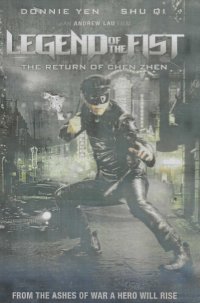 I bought this film recently on one of my antique mall splurges or at the Lutherans for Life garage sale. As it was on the top of the stack–which, in this case, means atop the old cabinet that holds our video games now that the old repurposed stereo that formerly could hold all of my unwatched videos is too full for any more–as I was saying, as it was on top of the cabinet, it took some precedence over the things behind the glass that formerly protected probably a sweet hi-fi thirty or forty or fifty years ago. But on a recent boyless night, I popped it in.
I bought this film recently on one of my antique mall splurges or at the Lutherans for Life garage sale. As it was on the top of the stack–which, in this case, means atop the old cabinet that holds our video games now that the old repurposed stereo that formerly could hold all of my unwatched videos is too full for any more–as I was saying, as it was on top of the cabinet, it took some precedence over the things behind the glass that formerly protected probably a sweet hi-fi thirty or forty or fifty years ago. But on a recent boyless night, I popped it in. I know, I know; it’s taken me how long to see this film whose screenplay was written by Raymond Chandler? This long, gentle reader, this long. So the real Chandler fans amongst you can titter behind your hands. I don’t know why it took so long; I guess it had been until now that I’d found it inexpensive for sale, or until recently that I was in the mood for a black and white noir film.
I know, I know; it’s taken me how long to see this film whose screenplay was written by Raymond Chandler? This long, gentle reader, this long. So the real Chandler fans amongst you can titter behind your hands. I don’t know why it took so long; I guess it had been until now that I’d found it inexpensive for sale, or until recently that I was in the mood for a black and white noir film.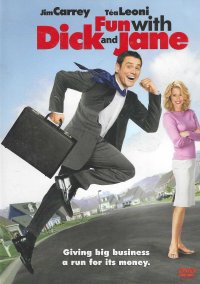 This film is a seventeen-year-old remake of a
This film is a seventeen-year-old remake of a 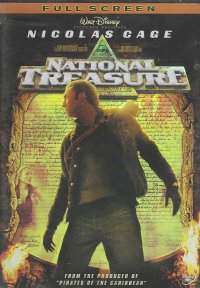 Oh, I have come to a place where I think of movies that are almost twenty years old as “recent.” I mean, this film came out when this blog was but a year old, when I was only a bit past thirty and probably didn’t even think about having children. So, yeah, this film came out two lifetimes ago, but it seems like not that long ago.
Oh, I have come to a place where I think of movies that are almost twenty years old as “recent.” I mean, this film came out when this blog was but a year old, when I was only a bit past thirty and probably didn’t even think about having children. So, yeah, this film came out two lifetimes ago, but it seems like not that long ago.


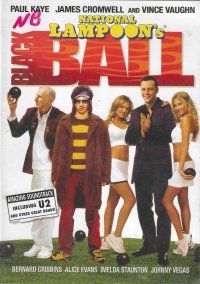 This film is labeled “National Lampoon’s,” but it was a British film and not an American film. So any connection to the National Lampoon franchises or brand is negligible, which is kind of unfortunate, as I was going to speculate on whether National Lampoon films were kind of lampooning films of certain genres with their entries in the field, but unfortunately, it would appear that they just rented out the name for the money. And not enough, as a (full disclosure) investor in National Lampoon Media Partners (NLMP) would tell you (because the investment has not panned out, but at least it was not a big of a loss in my portfolio as Salon).
This film is labeled “National Lampoon’s,” but it was a British film and not an American film. So any connection to the National Lampoon franchises or brand is negligible, which is kind of unfortunate, as I was going to speculate on whether National Lampoon films were kind of lampooning films of certain genres with their entries in the field, but unfortunately, it would appear that they just rented out the name for the money. And not enough, as a (full disclosure) investor in National Lampoon Media Partners (NLMP) would tell you (because the investment has not panned out, but at least it was not a big of a loss in my portfolio as Salon).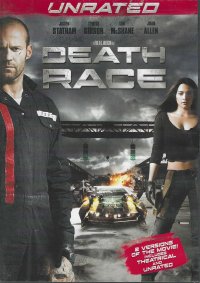 I spent a little of the time that the boys were away at camp and at their church youth group gathering watching R-rated movies such as this one, which features Jason Statham as a former racecar driver framed for the murder of his wife and incarcerated on Terminal Island, a privately owned prison where convicts are given a chance to participate in a pay-per-view livestreamed Death Race, where they race on a course in cars modified with armor and weapons and try to kill one another on the track.
I spent a little of the time that the boys were away at camp and at their church youth group gathering watching R-rated movies such as this one, which features Jason Statham as a former racecar driver framed for the murder of his wife and incarcerated on Terminal Island, a privately owned prison where convicts are given a chance to participate in a pay-per-view livestreamed Death Race, where they race on a course in cars modified with armor and weapons and try to kill one another on the track.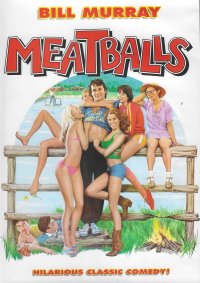 It’s been ten years (?!) since I read
It’s been ten years (?!) since I read 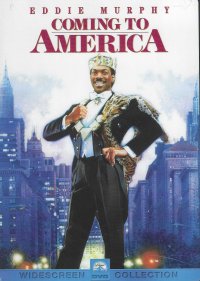 This is one of my beautiful wife’s favorite movies, and now that the youngest is fourteen, we thought he was old enough. He’s good with swearing, but boobs in movies weird him out. He is definitely not a child of the 1980s, when many if not most films that a young man watched (comedies and action films) featured at least one set of breasts, no matter how briefly. So the youngest only made it a little way into the movie before heading off to his YouTube videos to learn how to be cool.
This is one of my beautiful wife’s favorite movies, and now that the youngest is fourteen, we thought he was old enough. He’s good with swearing, but boobs in movies weird him out. He is definitely not a child of the 1980s, when many if not most films that a young man watched (comedies and action films) featured at least one set of breasts, no matter how briefly. So the youngest only made it a little way into the movie before heading off to his YouTube videos to learn how to be cool. The trailer for this film appears before one of the movies I watch fairly frequently–perhaps The Man Who Knew Too Little on DVD, or perhaps Dodgeball. So I have seen the trailer enough so that when I found the video at the antique mall when I had a gift certificate to spend, I picked it up.
The trailer for this film appears before one of the movies I watch fairly frequently–perhaps The Man Who Knew Too Little on DVD, or perhaps Dodgeball. So I have seen the trailer enough so that when I found the video at the antique mall when I had a gift certificate to spend, I picked it up. My oldest re-watched Fletch earlier this year, and I told him to look for Fletch Lives in the watched section of the video library. The video library is only marginally better organized than the book library, which is basically because we own fewer DVDs and videocassettes to randomly array on the too-packed shelves allotted them. He did not find it then, but when I went looking for another previously watched (Coming to America, which my beautiful wife and I had seen, but not the boys had not). The oldest made a run through the stacks looking for that film and could not find it, either. So I took a try and found this film on the first pass through (and Coming to America on DVD on the second pass, but early, as it was like the third film on the upper left shelf’s second rank).
My oldest re-watched Fletch earlier this year, and I told him to look for Fletch Lives in the watched section of the video library. The video library is only marginally better organized than the book library, which is basically because we own fewer DVDs and videocassettes to randomly array on the too-packed shelves allotted them. He did not find it then, but when I went looking for another previously watched (Coming to America, which my beautiful wife and I had seen, but not the boys had not). The oldest made a run through the stacks looking for that film and could not find it, either. So I took a try and found this film on the first pass through (and Coming to America on DVD on the second pass, but early, as it was like the third film on the upper left shelf’s second rank).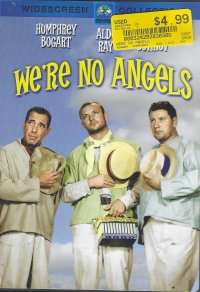 C’mon, man, you know this is the 1954 film starring Humphrey Bogart in one of his later roles and not the 1989 De Niro and Penn film. I mean, I guess I could watch that, too, since it is an oldie now–characterized not so much by black and white or bright Technicolor, but the lack of CGI and the presence of a plot.
C’mon, man, you know this is the 1954 film starring Humphrey Bogart in one of his later roles and not the 1989 De Niro and Penn film. I mean, I guess I could watch that, too, since it is an oldie now–characterized not so much by black and white or bright Technicolor, but the lack of CGI and the presence of a plot.
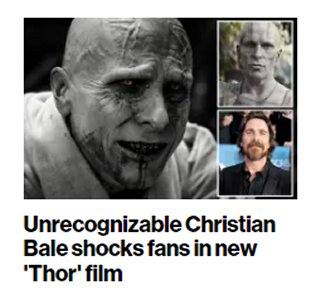
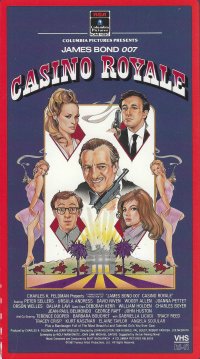 As you might know, gentle reader, my boys and I a couple of years ago went through the main line of James Bond movies in order, starting with Dr. No and culminating in the end of the Pierce Brosnan years. Actually, I started them with the first appearance of James Bond in
As you might know, gentle reader, my boys and I a couple of years ago went through the main line of James Bond movies in order, starting with Dr. No and culminating in the end of the Pierce Brosnan years. Actually, I started them with the first appearance of James Bond in 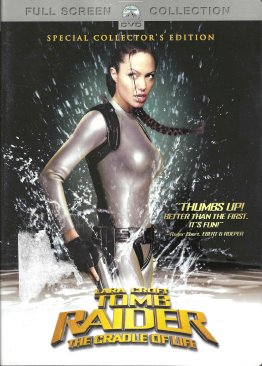
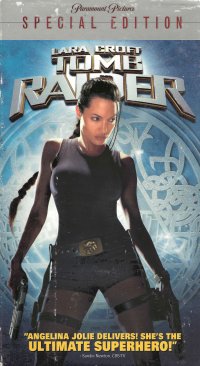 I picked up Cradle of Life spending a gift certificate at Relics a couple months ago; I knew it was the second, so I was pleased to see that the library book sale had the first one so that I could watch them in order. Not that it’s required; they’re episodic and the second does not have anything to do with the first.
I picked up Cradle of Life spending a gift certificate at Relics a couple months ago; I knew it was the second, so I was pleased to see that the library book sale had the first one so that I could watch them in order. Not that it’s required; they’re episodic and the second does not have anything to do with the first.